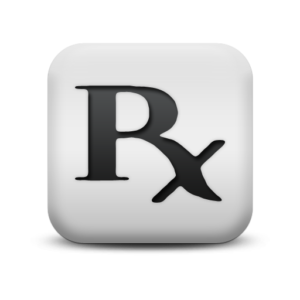 Renewal for 2017 individual health insurance plans is just around the corner, and you’ve probably noticed that your rates might be increasing quite substantially next year. For example, in California alone, individual health insurance policies are expected to rise more than 13% in 2017 (that’s 3 times the increase over the past two years).
Renewal for 2017 individual health insurance plans is just around the corner, and you’ve probably noticed that your rates might be increasing quite substantially next year. For example, in California alone, individual health insurance policies are expected to rise more than 13% in 2017 (that’s 3 times the increase over the past two years).
So… why is this happening? And… what can you do about it? To answer the first question: healthcare reform is a big part of the reason your rates are going up. We’ll explain what you can do about it later in this article.
In case you’re not familiar, changes to the individual health insurance marketplace were at the core of Obamacare. There were a number of different provisions that went into place, but the two big ones were:
- A) Guaranteed Issue,
- And B) Essential Health Benefits.
“Guaranteed Issue” is the requirement that if you apply for health coverage, you have to be accepted. In other words, if you have a preexisting condition, you cannot be denied coverage. Since this concept took effect on January 1st of 2014, thousands and thousands of people with existing health conditions have enrolled in individual health insurance plans nationwide. Many of these people have had a substantial need for various treatments: prescription drug coverage, surgeries, hospitalizations, and other kinds of medical services. As a result, costs to the insurance companies have gone up, and those costs are now finally catching-up to the consumer (you) in the form of premium increases.
Additionally, “Essential Health Benefits” are new benefits that are now mandated by Obamacare, and must be included in all individual health insurance policies. Prior to 2014, individual health plans were not required to include these “essential benefits” (examples: things like maternity, mental health benefits, and others). As a result, the addition of these benefits has caused prices to increase because there are more health services that need to be covered.
Given the combination of the two concepts listed above, we’re now starting to see substantial increases in premiums in 2017, in order to conform. In fact, in many cases, the cost of providing healthcare services under healthcare reform has been more than what was originally anticipated. As a result, certain insurance companies throughout the country have decided to exit the health insurance exchanges altogether, because of heavy financial losses.
So what can you do if your individual/family health insurance plan is increasing this year? Here are some ideas:
- Shop. Make sure to take a good look at all of the available options within your zip code this year. There may be new (and/or alternative) plans available in your area that can save you money. Find a good health insurance broker who can assist you.
- Leverage the Strength of Small Business Plans. If you’re a small business owner (especially a SMALL business owner of like 2-3 employees), consider setting up a small group health insurance plan with your partners so you can exit the individual marketplace. Small group plans are not seeing price increases at nearly the same rate as individual plans. One big reason why, is that small group plans haven’t been affected as much by having to “on-board” so many people with preexisting conditions like the individual marketplace has. You could reduce your costs substantially with this strategy.
- Consumer Direct. Consumer directed healthcare is when you participate in a higher deductible plan, and then pair it up with an HSA (Health Savings Account). This can help you lower your premium, and then retain funds in your HSA that would normally go to the insurance companies.
- Look into the “Little Guy” Insurance Companies. In California (especially Southern California), there are many smaller regional insurance companies that are participating on the Obamacare health insurance exchange. In many cases, these smaller insurance companies are actually thriving under the conditions created by healthcare reform. You might be pleasantly surprised that the prices, service, and plans are actually pretty good. Check with your broker for local recommendations.
- Don’t Panic. 2017 could be the “big year” for price increases, and they may stabilize again next year. Just because there are big increases this year, doesn’t necessarily mean there will be again next year. If your increase this year is manageable (ie: not breaking the bank) and you like your current plan, consider sticking with it for another year. You can always change it next year.
Be sure to contact us at PolicyAdvantage.com if we can assist you with your current individual health plan this year (Phone: 800-617-0089, Email: info@policyadvantage.com). We may have recommendations that can help you improve coverage and save money.
Thanks for stopping by, we hope you found our information to be valuable. Check back at our blog to get further information about funding healthcare. Also, please share with your friends, clients, colleagues, and family. Here are a few of our other information outlets:
Home Page: https://policyadvantage.com
Twitter: http://www.twitter.com/PolicyAdvantage
Facebook: http://www.facebook.com/PolicyAdvantage
YouTube: http://www.youtube.com/PolicyAdvantage
Pinterest: http://www.pinterest.com/PolicyAdvantage
Word Press: http://www.policyadvantage.wordpress.com
![]() So you’re passionate about… TRAVEL. We hear you, travel bloggers. And that’s why we’ve put together a portfolio of TOP world-wide, affordable health insurance products for you. They can help you cover your health while you’re globe-trotting.
So you’re passionate about… TRAVEL. We hear you, travel bloggers. And that’s why we’ve put together a portfolio of TOP world-wide, affordable health insurance products for you. They can help you cover your health while you’re globe-trotting. 

 Prescription drug coverage in health insurance plans can sometimes be confusing. We’ve put together a simple, short guide that outlines the four “tiers” of prescription drug coverage found in most individual health insurance plans, so that you can understand your options better.
Prescription drug coverage in health insurance plans can sometimes be confusing. We’ve put together a simple, short guide that outlines the four “tiers” of prescription drug coverage found in most individual health insurance plans, so that you can understand your options better. 